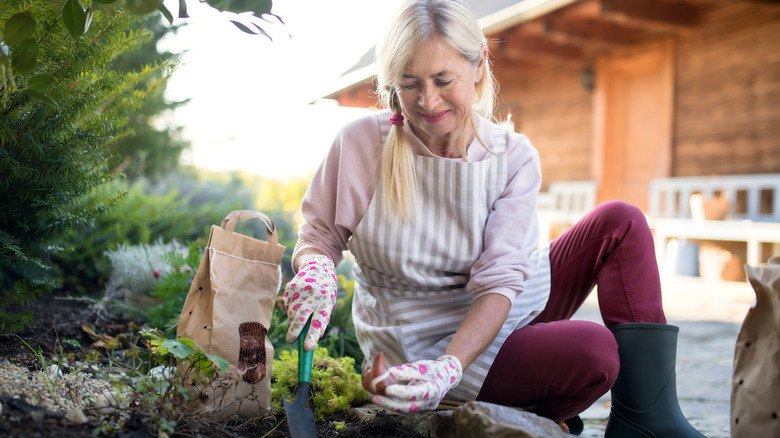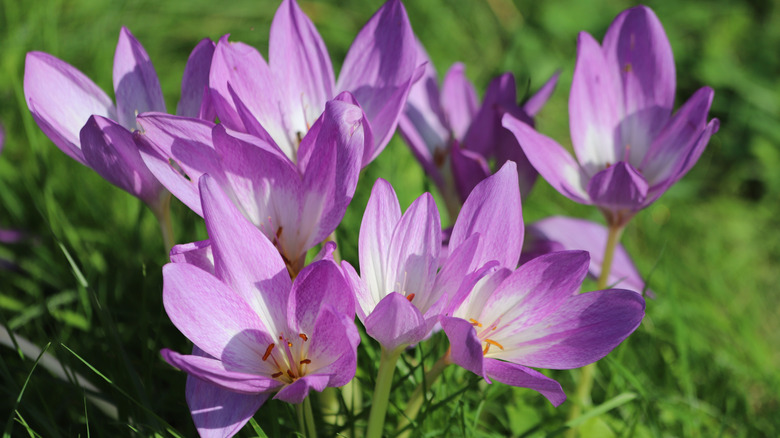The Easy-To-Grow Flower Bulb You Should Plant In August For Dazzling Fall Blooms
Just because summer is almost over doesn't mean we have to say goodbye to fresh floral blooms. While the spring crocus is noted as a herald of warmer weather, the autumn crocus (Colchicum autumnale) makes its debut in the fall. You can plant autumn crocus bulbs in early August to enjoy their striking blooms around September or early October. Once you're familiar with the perfect time of year to plant a crocus bulb, this easy-to-grow flower is a breeze to care for.
Technically speaking, the autumn crocus isn't a part of the Crocus genus – it's a perennial species within the lily family. The plant shoots out 4 inch to 6 inch long flower stems in the fall, each with a single bloom around 2 inches wide. Each bulb has the capacity to produce around one to 10 blooms. While the flowers are typically pink to purple they can also be white or yellow. The leaves only appear after the flowers have finished, hence its common name of naked lady. Despite the other nickname of meadow saffron, this plant is considered highly toxic to humans and animals when consumed. So, make sure you plant it out of reach of small children and pets.
How to plant and care for the Autumn crocus
The autumn crocus grows well in USDA hardiness zones 4 to 9. Plant your bulbs in well-drained soil about 3 to 6 inches apart. Since the bulbs are relatively large, it's also a good rule of thumb to plant them 3 to 6 inches deep. You can plant them in a pot or directly in the ground. The Autumn crocus tends to do best in full to partial sunlight. Consider planting them in the middle of your garden. Their sometimes drooping flowers might benefit from the support of other plants growing nearby. If your crocus isn't flowering, you may need to wait for the leaves to die back, dig up your bulbs, and space them further apart.
Caring for your Autumn crocus flower is simple and beginner-friendly. With ample sunlight and water, your plant should flourish. There's no need to deadhead the blooms — they will naturally wither away on their own. The foliage will provide essential nutrients for your plant to return strong year after year. After three to four blooming seasons, you can attempt to harvest newer bulblets from the main bulb cluster. Wait for the plant to go dormant over summer (once the foliage has died down), dig up the cluster, and divide up the bulbs to replant again.

